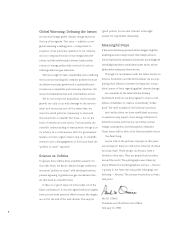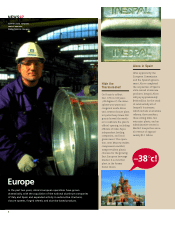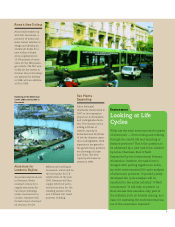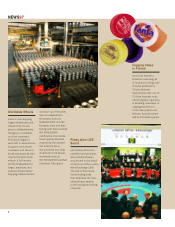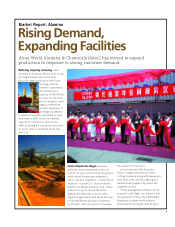Alcoa 1997 Annual Report Download - page 5
Download and view the complete annual report
Please find page 5 of the 1997 Alcoa annual report below. You can navigate through the pages in the report by either clicking on the pages listed below, or by using the keyword search tool below to find specific information within the annual report.
3
the Alcoa Production System (APS). At heart, these sys-
tems are integrative mechanisms for learning, teach-
ing about and operating the business.
In recent months we have taken the next step to
weave our teaching and learning process into the fab-
ric of our organization with the creation of what we
are calling Alcoa University. The University curricu-
lum includes the principles of the ABS and APS and
features intensive learning on the factory floor and
benchmark visits to other companies.
Knowledge and Growth
We believe successful companies grow, and another
example of the idea of “systematic accumulation and
application of knowledge” is reflected in the growth of
the company.
On February 6, 1998 we signed the papers com-
pleting the acquisition of Inespal — the Spanish alu-
minum company. We began the discussions in 1990
that led to the acquisition of this $1.1 billion com-
pany. Knowledge of the industry and perseverance
produced this successful outcome. With full
integration of Inespal into the Alcoa system, we are
confident we will have taken another major step
toward making Alcoa the preeminent supplier in the
European market.
On the other side of the world, our path-breaking
agreement with the China National Nonferrous
Metals Industry has given us a 30-year contract to
supply alumina to the world’s largest future market.
In turn, this agreement has given us a basis to
restart our alumina capacity in St. Croix (the Virgin
Islands) and to begin an expansion of our alumina
production capacity in Australia. And a host of other
expansions and investments are being made to
strengthen our cost position and capacity to serve
customers — a hydroelectric project in Brazil, a new
forged wheel plant in Hungary, extrusion capacity in
Lafayette, Ind., and many more.
Signs of Financial Strength
In an industry such as ours, subject to the ebb and
flow of business cycles, we believe it is important to
maintain a conservative financial position. Doing so
insures that we can maintain our dividend in good
times and bad, that we can do financings when we
choose — not when we must — and that we are
always prepared to take advantage of new business
opportunities when they come along.
This policy approach has served us well. In 1997,
our earnings level created a “bonus dividend” of 50
cents per share, which will be paid to shareholders
through the course of 1998. Our business activity also
supported more than $900 million of reinvestment in
property, plant and equipment and a nearly equal
amount in repair and maintenance to keep our pro-
duction capability in first-class condition.
In addition, we repurchased more than eight
million shares of Alcoa common stock. At year-end
our debt to total capital ratio was 20%. We are in
great shape financially.
Paul H. O’Neill
Chairman and Chief
Executive Officer






